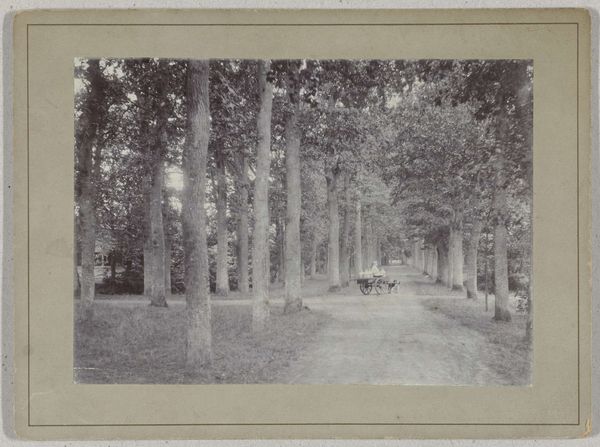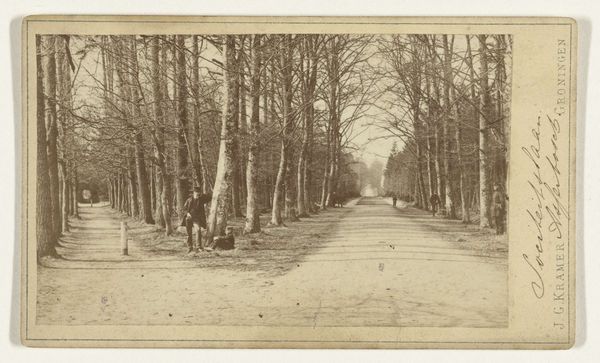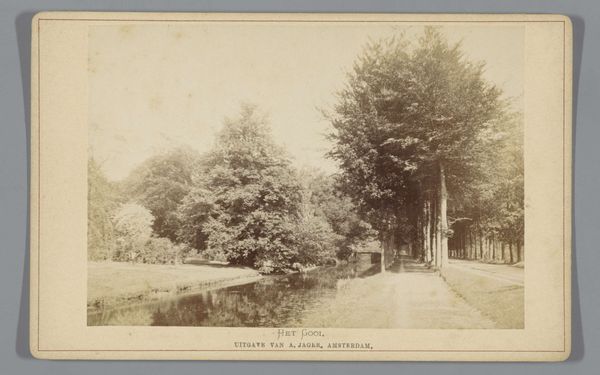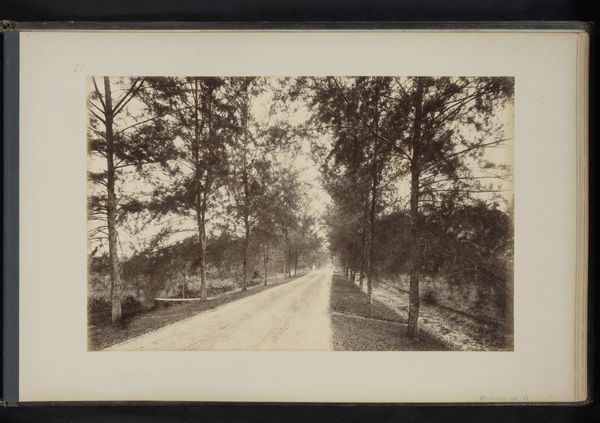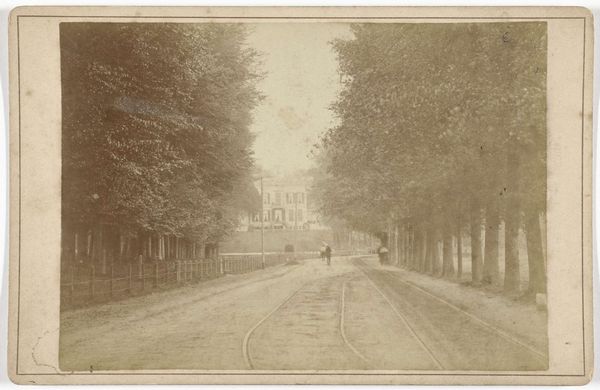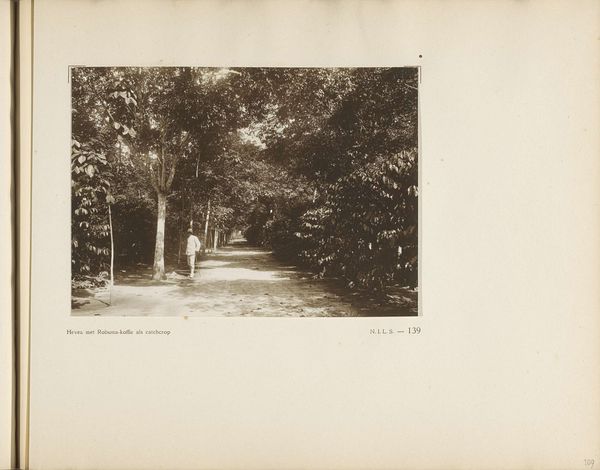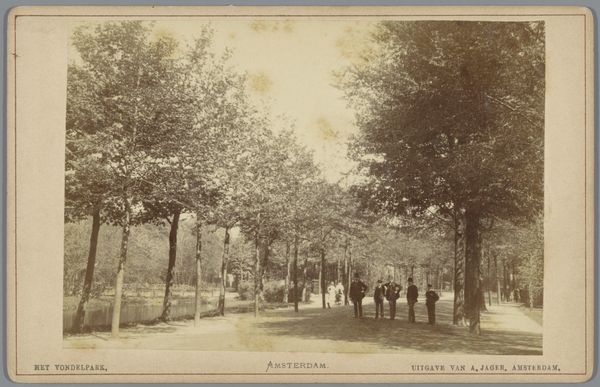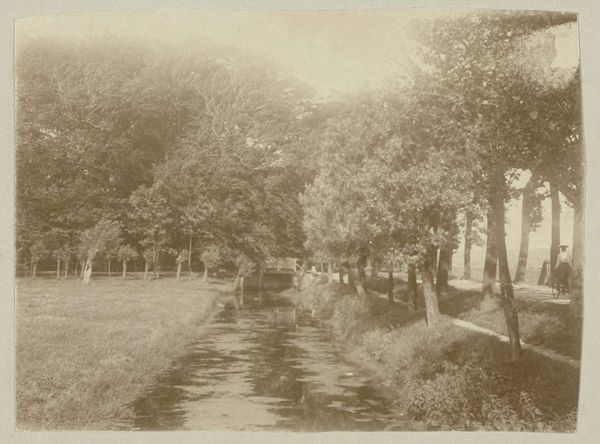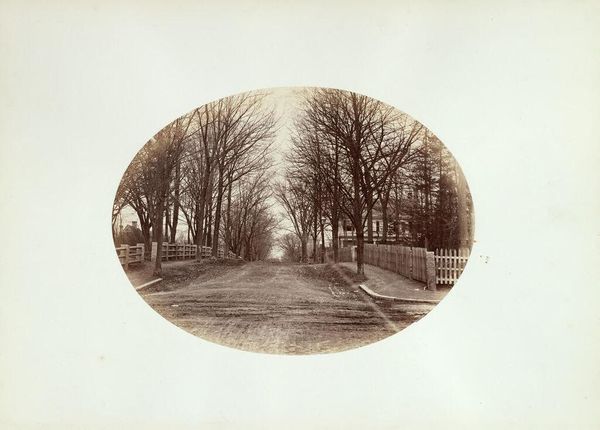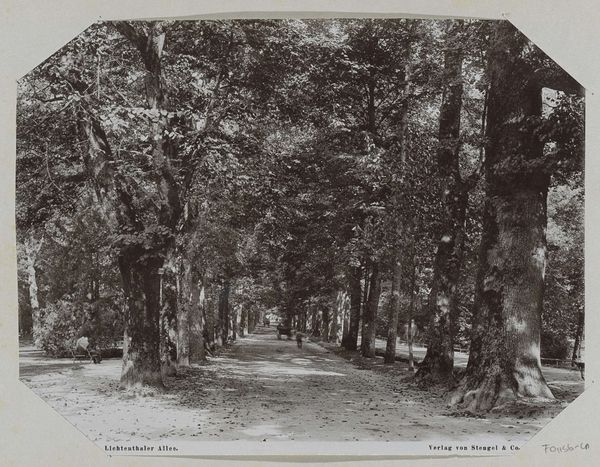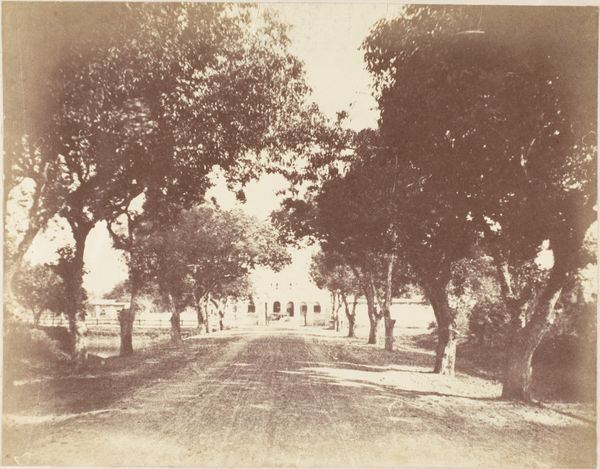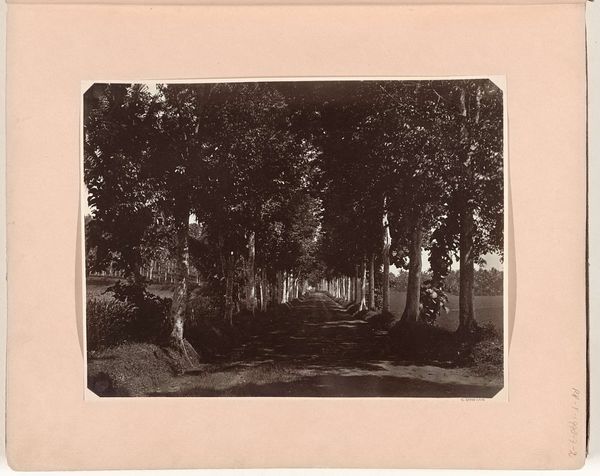
Dimensions: height 108 mm, width 167 mm
Copyright: Rijks Museum: Open Domain
Editor: This photograph, "Bospad in het Gooi" by Andries Jager, made between 1860 and 1890 using the gelatin-silver print process, feels incredibly serene. The lines of trees draw the eye into a softly lit distance. What story does this scene tell you? Curator: For me, this image speaks volumes about the evolving role of photography within art and society. Consider that it was created during a period where photography was battling for recognition as a legitimate art form, not merely a tool for documentation. The soft focus and composition consciously emulate landscape painting, aiming for artistic credibility. Editor: So, it's not just a snapshot, but a statement? Curator: Exactly! Think about the rise of pictorialism around this time; photographers manipulated images to achieve painterly effects. Jager is contributing to a dialogue around how the Dutch landscape, traditionally captured in painting, could be represented and perhaps even re-envisioned through the relatively new medium of photography. How do you think the public at the time responded to this photographic interpretation of nature? Editor: I hadn't thought about the public reaction. Maybe they saw it as making art more accessible, taking art outside the confines of the museum? Curator: Precisely! This image challenges the existing hierarchy. It democratizes art, showcasing the beauty of everyday scenery while simultaneously asserting photography’s artistic merit. And its current presence within the Rijksmuseum is just one step in the development of photography. Editor: That’s fascinating! It makes me look at this photograph in a completely new way, less as just a pretty picture and more as part of a larger cultural shift. Curator: It also helps us understand how our appreciation of landscapes is influenced by these earlier images. Every artwork adds a new layer of discourse on our culture.
Comments
No comments
Be the first to comment and join the conversation on the ultimate creative platform.
